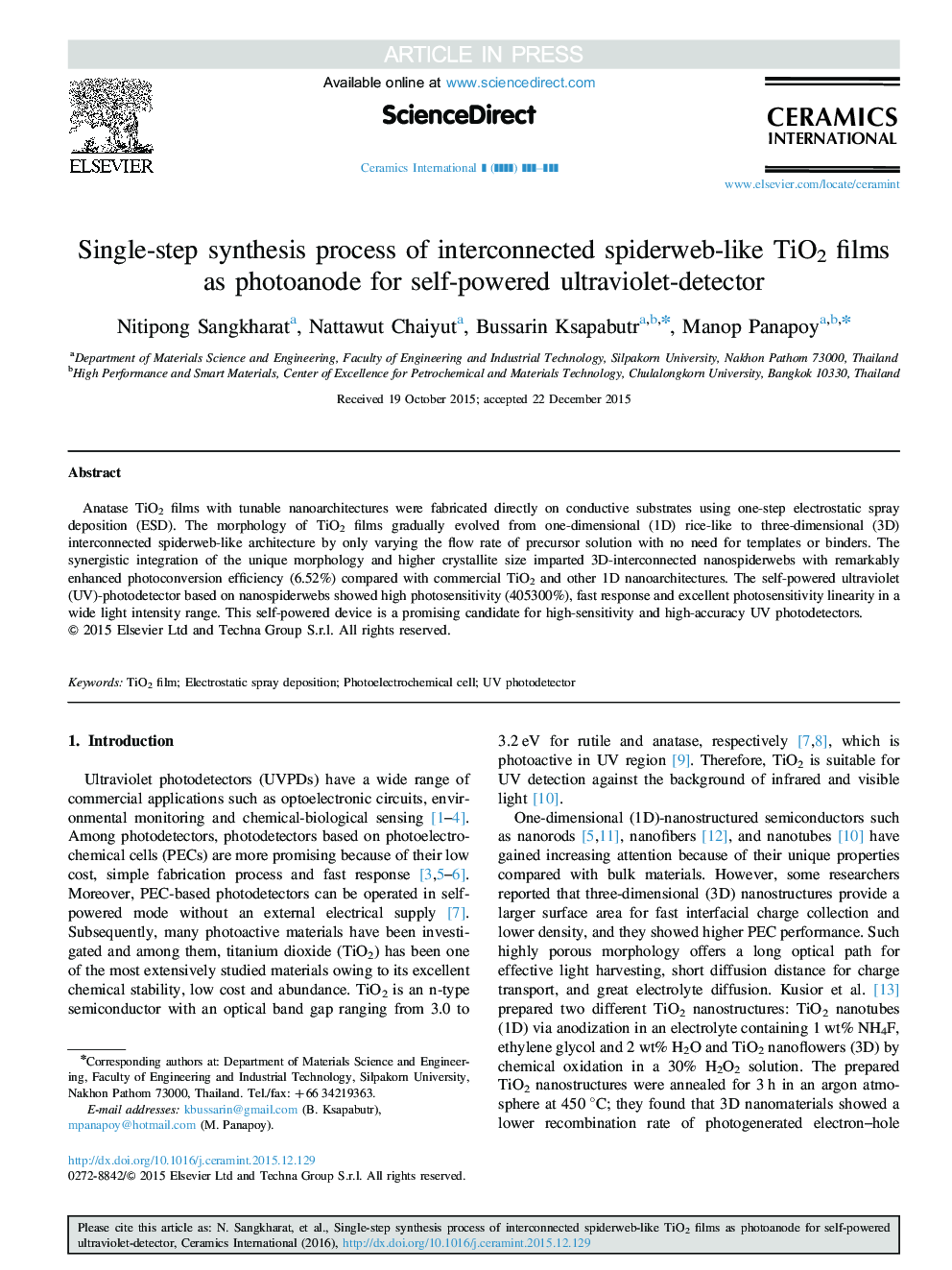| Article ID | Journal | Published Year | Pages | File Type |
|---|---|---|---|---|
| 10623954 | Ceramics International | 2016 | 7 Pages |
Abstract
Anatase TiO2 films with tunable nanoarchitectures were fabricated directly on conductive substrates using one-step electrostatic spray deposition (ESD). The morphology of TiO2 films gradually evolved from one-dimensional (1D) rice-like to three-dimensional (3D) interconnected spiderweb-like architecture by only varying the flow rate of precursor solution with no need for templates or binders. The synergistic integration of the unique morphology and higher crystallite size imparted 3D-interconnected nanospiderwebs with remarkably enhanced photoconversion efficiency (6.52%) compared with commercial TiO2 and other 1D nanoarchitectures. The self-powered ultraviolet (UV)-photodetector based on nanospiderwebs showed high photosensitivity (405300%), fast response and excellent photosensitivity linearity in a wide light intensity range. This self-powered device is a promising candidate for high-sensitivity and high-accuracy UV photodetectors.
Related Topics
Physical Sciences and Engineering
Materials Science
Ceramics and Composites
Authors
Nitipong Sangkharat, Nattawut Chaiyut, Bussarin Ksapabutr, Manop Panapoy,
